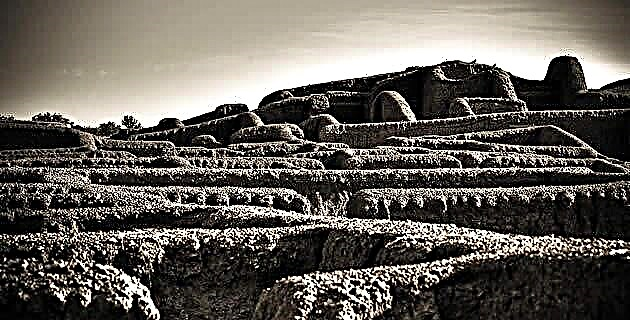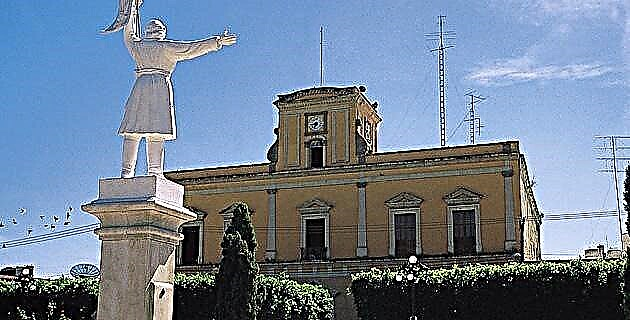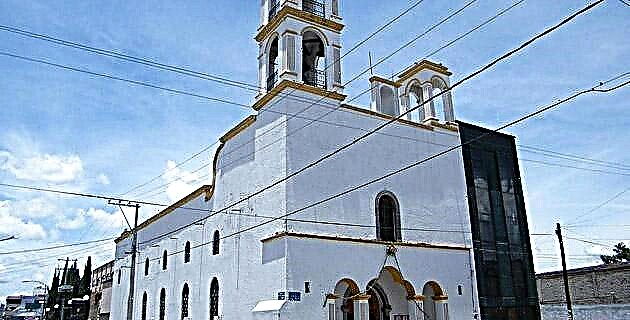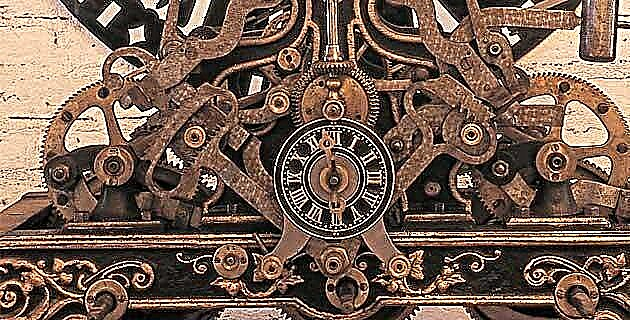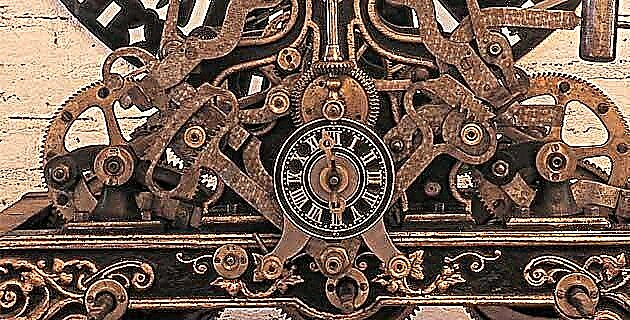
It all began one day in 1909 when Alberto Olvera Hernández, barely 17 years old, realized that the “chimney” clock had broken down… thus the exciting history of Clocks Centenario was born. Get to know it!
When trying to repair that mantel clock, he disassembled it and that was when he succumbed to the magic of that little time-measuring machine, a fascination that would accompany him for the rest of his life.
Alberto Olvera He then decided to build his first “monumental” clock that would preside over the labor and social activities of the workers of the father's farm, located in the Eloxochitlán neighborhood, in Zacatlán, Puebla.
To carry out its objective, Alberto Olvera he had only a wood lathe, a forge, an anvil, and some rudimentary tools from his father's carpentry shop. With his own hands he built a machine for drilling wood, made clay crucibles and made some files. He put down to work and three years later, in August 1912, the inauguration of his first watch took place, at the Coyotepec farm, Zacatlán, Puebla.
Alberto Olvera was a very restless young man, he played the violin and mandolin and was the inventor, among other things, of a track changer for electric trains that he patented in 1920. “Trying something is a symbol of restlessness. Doing so is proof of character ”, was the guiding principle of its fruitful existence.
Despite his varied occupations, Alberto Olvera began to build another clock in 1918. This time it only took him a year to complete and install it in the neighboring town of Chignahuapan. He continued working in Coyotepec until 1929, the year in which he installed his workshop in the city of Zacatlán, Puebla.
Thus was born Centennial watches, name adopted in 1921, date of the first centenary of the Consummation of the Independence of Mexico.
They currently work in Centennial watches the children and grandchildren of Alberto Olvera, as well as fifty employees and workers. For Jose Luis Olvera Charolet, current manager of Clocks Centenario, building a public clock is a commitment, not only with those who commission or pay for it, but with the entire community, since it is precisely this clock that governs the activities of a population. The inauguration of a monumental clock is awaited with great joy and from the moment it arrives it is considered by the locals as their own. Whether in the church, the municipal palace or the monument built specifically to house it, the clock has a lot to do with the traditions and roots of Mexicans to their homeland. It has been the case that a Mexican worker residing in the United States pays the entire cost of the clock in his native “town”.
Watches Centenario is the first monumental watch factory in Latin America. Each year, between 70 and 80 of them are placed in towns in Mexico and abroad. José Luis Olvera affirms that in our territory –from Baja California to Quintana Roo– there are more than 1500 monumental watches manufactured by this company.
Among the most important Centennial clocks is the floral of the Sunken Park (Luis G. Urbina) in Mexico City, one of the largest in the world, which occupies an area of 78 square meters and has a dial of ten meters in diameter. The basilica of Nuestra Señora del Roble, in Monterrey, stands out for its monumentality, with its four covers of four meters in diameter each. Undoubtedly, one of the darlings of the Olvera family is the floral clock of Zacatlán, now a symbol of the city, donated by Clocks Centenario to the population in 1986. This clock, unique in the world with two opposite five-sided faces. meters each, activated by a central mechanism, marks the hours with nine different melodies, according to the time of year, at 6 and 10 in the morning, at 2 in the afternoon and at 9 at night. determined not to interfere with the tolling of the church bells.
Every good monumental clock that boasts of being one must have its chime (although it is popularly called a chime, it is not correct, says José Luis Olvera). Carillon is the set of bells that produce a certain sound or melody to mark time lapses. The carillon melodies are chosen by the client according to the musical traditions of the place or their personal preferences.
In this regard, José Luis Olvera narrates some anecdotes: when the city of Torreón acquired two clocks, one floral for the Regional Museum of La Laguna and another for which a special monument was built, the then municipal president asked the latter to play La Filomena hourly. In Tuxtla Gutiérrez there is a floral clock with three faces that interprets the Tuxtla and Las Chiapanecas waltz. Just last year, the municipal president of Santa Bárbara, an old mining town in Chihuahua, commissioned a carillon that plays Amor Perdido.
Clocks Centenario, in addition to manufacturing and installing the clocks it produces, repairs French, German and English clocks from the late 19th and early 20th centuries, when Porfirio Díaz suggested that one be placed in each town.
José Luis Olvera comments that the host of a television program once asked him: “Is it business to build watches?” The answer was immediate: “We have been making them for more than eight decades.” “In this business, Olvera adds, after-sales is very important. By selling a watch, we make a commitment that does not end on the opening day. When necessary, the Centenario Watches technicians travel to the interior of the country or abroad to repair or simply to maintain the watch that, in addition to being part of a community, allows us to be present even in the most remote towns and attract attention of its inhabitants ”.
Visit the Alberto Olvera Hernández Museum, in Zacatlán, Puebla. www.centenario.com.mx



